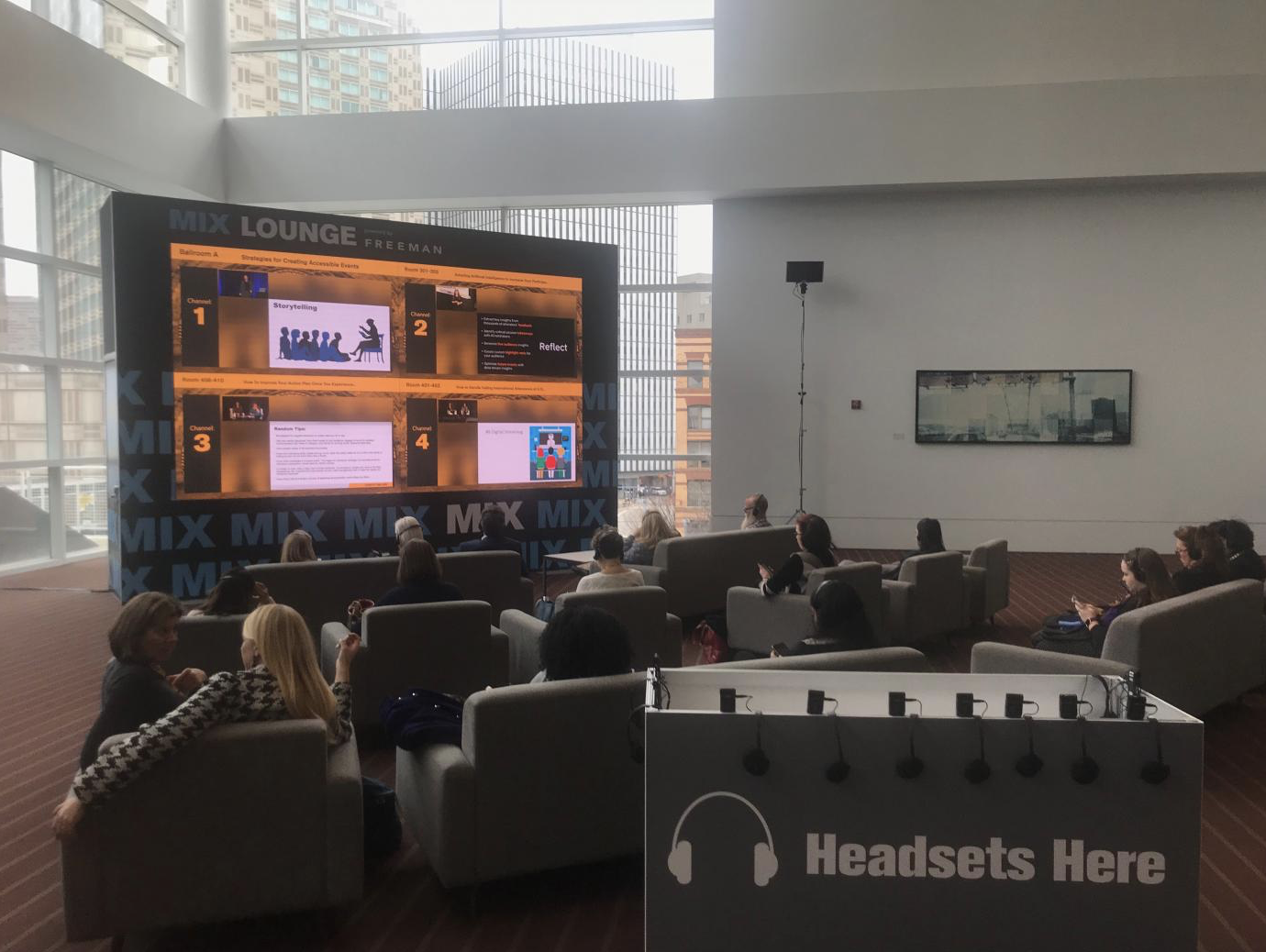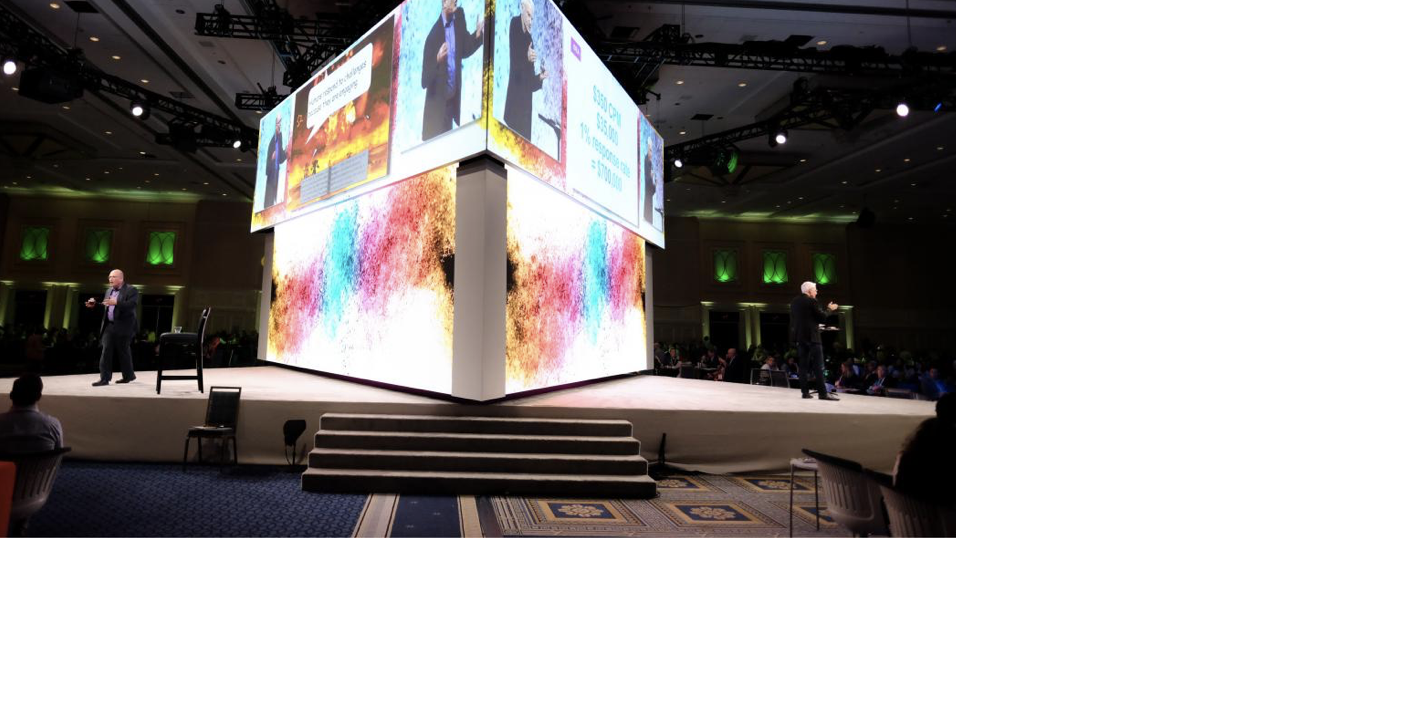Wireless headsets have given planners opportunities to use more of their event space for educational purposes. For instance, spaces adjacent to noisy, high-traffic areas can accommodate presentations when the audience is using earpieces. IMEX America in Las Vegas uses one end of its exhibit hall to house inflatable breakout rooms where attendees and presenters wear headsets to eliminate the din of the trade-show floor.
Headsets can also allow the main stage at an event to be shared by those giving different presentations at the same time. At the American Society of Association Executives’ annual experiential-design showcase, dubbed XDP, three sessions take place at once on the main stage while attendees choose the audio feed they want to follow in their headsets.
 Even in prefunction spaces, planners can use headsets to deliver education to those who want to sample concurrent sessions. At the Professional Convention Management Association’s Convening Leaders conference each January, Freeman creates what it calls the Mix Lounge, where attendees can choose among several breakouts being shown on centrally located monitors, changing up the audio feed in their headsets as they please.
Even in prefunction spaces, planners can use headsets to deliver education to those who want to sample concurrent sessions. At the Professional Convention Management Association’s Convening Leaders conference each January, Freeman creates what it calls the Mix Lounge, where attendees can choose among several breakouts being shown on centrally located monitors, changing up the audio feed in their headsets as they please.
However, the Covid-19 pandemic has thrown a hurdle in the way of this useful tactic—sanitary protocols won’t allow attendees to share event-provided headsets for the foreseeable future. As a result, a company called Silent Noize Events has created an app which lets attendees use their own headsets or earpieces to listen to any of an event’s sessions. Downloadable from the Apple and Google Play stores, the Silent Seminars app lets users connect to all session audio from their smartphones, and in multiple languages.
In the app, each event has its own tab accessible by a password chosen by the event host. The app is also customizable so that the event’s agenda and sponsors can be included. And for the technicians delivering the audio, a tablet with a separate broadcaster app is provided.
“The app offers the benefits of headsets—great audio quality, multiple breakout spaces in the same room, and reduced noise levels within the space so that multiple exhibitors or presenters can communicate simultaneously—and the process of tuning in is even easier than in the past,” says Duncan Strain, the company’s director.

